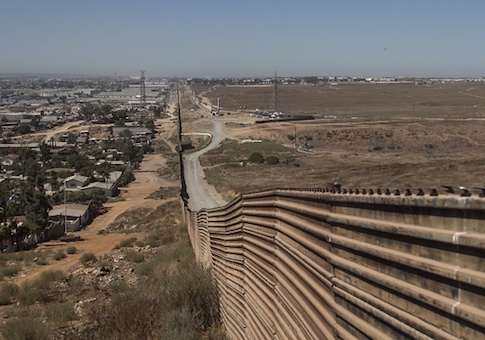The number of attempted illegal entries at the southwestern border declined in January, new data from the Department of Homeland Security show, representing both a drop from Obama-era highs and an increase from the exceptional lows during the early days of the Trump administration.
Some 35,822 people attempted to cross the southwestern border in January, composed of 25,980 individuals who were apprehended attempting to cross the border not at an established port of entry, and 9,842 individuals who were denied entry because they lacked the requisite documentation.
That total represents an 11 percent decline from December, when slightly more than 40,000 people attempted to cross the border. However, it is a marked increase as compared against the pronounced lows in the middle of 2017, a year that saw a significant decline in the rate of attempted border crossings.
Often attributed to the tough-on-immigration rhetoric of President Donald Trump, the so-called Trump Effect saw attempted border crossings drop as low as 15,766 people in April of last year. Rates rose again through the fall and early winter of 2017, but still remained below the highs of President Barack Obama's term. In October of 2016, 66,708 people attempted to cross the border; similarly high rates appear throughout Obama's second term in office, including a record 68,804 in May of 2014.
The attempted border crossings included substantial numbers both family unit migration and unaccompanied minors. In January, approximately 3,200 unaccompanied minors and 5,600 family units attempted to cross not at a port of entry, and 700 unaccompanied minors and 3,500 family units attempted to cross at a port of entry without meeting the requirements for entry.
The administration has been signaling concern about the rates of unaccompanied minors and family units attempting to cross the border illegally. Customs and Border Patrol "continues to be concerned about steady increase in the flow of unaccompanied children and family units from Central America, as transnational criminal organizations continue to exploit legal and policy loopholes to help illegal aliens gain entry and facilitate their release into the interior of the country," a December report from DHS noted.
These entries represent a particular issue because current law requires the release into the interior of unaccompanied children and family units whom the department apprehends. Unaccompanied children are transferred to the Office of Refugee Resettlement and then placed with legally resident sponsors (usually family members) while they await an immigration hearing. Families are detained for a few days or weeks at a detention center, then similarly released awaiting proceedings.
This de facto non-detention policy, opponents argue, means unaccompanied minors and families can, once released by immigration authorities skip out on their immigration hearings and become illegal residents with relative ease. A recent report from the Center for Immigration Studies claimed that 75 percent of foreign nationals not detained prior to proceedings fail to appear at their actual hearing.
"DHS front-line personnel are required to release tens of thousands of unaccompanied alien children and illegal family units into the United States each year due to current loopholes in our immigration laws. Once again, this month we saw an unacceptable number of UACs and family units flood our border because of these catch and release loopholes," said DHS Acting Press Secretary Tyler Houlton.
Supporters of the quick release of children and families argue the practice of detaining otherwise non-criminal illegal immigrants, especially children and mothers, in prison-like settings is inhumane.
While the political disagreement about the release of unaccompanied minors and families is likely to continue, the early numbers for fiscal year 2018 suggest that the raw totals of both groups have dropped. Attempted entries by unaccompanied minors have declined 44 percent for the first four months of FY 2018 as compared against FY 2017; attempted entries by family units have declined 53 percent over the same period.
